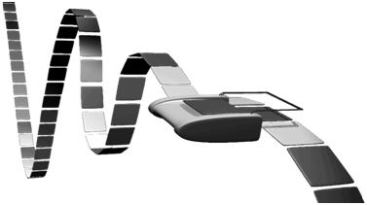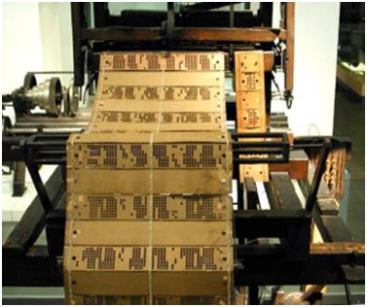1. What is a computer, actually?
Officially, what is a computer? « It’s only a machine able to automatically execute a series of simple operations that it was asked to do. » Here is what tell computer scientists and great thinkers of the computer. A bit dismissive … So, they are obliged to identify all elementary operations that the computer will execute step by step and write them in a program in order to achieve results. This method is called « algorithmic ». It is the opposite of artificial intelligence, which assumes that the machine can and must become intelligent to understand human needs and remove algorithmic programming.
This antagonism between the two visions is old. It dates from early days of computing, in the 1950s . Unfortunately , artificial intelligence has rapidly lost ground to algorithms whose approach was much simpler and could be satisfied with the low power of the first computers. While the artificial intelligence needs power … and researchers sincerely motivated by this challenge ! Indeed, an intelligent computer does not need computer scientist interpreters and the researchers in computing scientists are computer scientists … Cornelian ! Precisely, note a strange fact : researchers in artificial intelligence have suddenly disappeared late 1980s, just after one of them had produced the first AI, in secret (Pandora / Intelligence Service, see the first post of this blog). It runs perfectly on the IBM PC of the time. I know that : I bought, used and sold it to large groups and governments.
Why algorithms was so simple? Because its function is to guide a stepper machine in operation, an instinctive and millennium method. Programmable machine is an old invention: from the 18th century in France, programmable looms with punch card were were manufactured industrially. You changed cards and the machine weaved a new kind of carpet or fabric. This programs storage medium, very convenient and reliable, will be used industrially for computing only two centuries later, in the 1960s.
2. A program, the suspense kingdom
To become aware of defects of the algorithmic consider a simple example. To tell a robot « walk 10 m », you program as follows: « Look straight ahead, move forward left leg, push the right leg forward then move it one step as soon as the left leg is vertical, leave the left leg go backward, move forward right leg, push the left leg forward then move it one step as soon as the right leg is vertical, leave the right leg go backward. This done, you repeat it 20 times in a row » (note: to reach 10 meters). The computer controlling the robot will not understand that what it is doing is called « walk » or it simply had 10 meters to go . If you want to do it again walking, along a sidewalk this time , the programmer must reinvent the entire sequence of movements.
The human who reads this program understands the robot must walk straight ahead but does not understand there is a goal ten meters away and what is this goal. Because it is not mentioned in the program! He will only understand at the end. Therefore it will have great difficulty in repairing or improving the program.
Not only algorithmic does not inform about his aim but it is unreadable! A program presents itself as a film strip consisting of a succession of still images. Each image has no interest in itself and gives no indication about the film. With or without a projector, it will be necessary to view the photos one after another until the end if we are to understand history. And even then! For this exercise you must have an excellent memory to see the evolution of the story! Conversely, a few text lines about the film inform what there is in it, without any effort of memory. In a program, it is exactly the same problem: each line is a still image giving an order to the machine. It is inordinately long to read and can allow to understand the role of the program only by reading until the end.
Computer scientists have ennobled the algorithmic, so their activity, finding it a founding father : Alan Turing, their God, who in my opinion actually did invent nothing. This man described in 1936 the ideal « mechanical procedure » for piloting a machine. The computer did not exist so it did not aim computing as they claim. More annoying, his « brilliant » concept was that looms used two centuries earlier in France with punch cards: a card per action.
You will recognize below an algorithm such as Wikipedia shows : like a roll of film.
A program, the suspense kingdom …
And here are the punch cards of the Jacquard loom, to be read and executed one by one as the Turing machine :
3. The true brilliant founder of computer and artificial intelligence: George Boole
The real computer genius is, in my opinion again, George Boole, the English who invented a logical algebra in 1854. Boole showed that with electromagnetic relay, which typically have two states: open or closed (either zero or 1, basis of information in computers!), we can calculate and reason. Today, computers exist only thanks to Boolean algebra, which is installed in all microprocessors. This is the « heart » of the computer. It controls organs and runs programs.
It turns out the « Boolean » contains reasoning functions our brain uses every second (« Computers and logic are inseparable – right?« ). IF, AND, OR, THEN, ELSE, YES, NO, etc.. The basis of artificial intelligence one century before the first computers. The algorithm found a way to divert this natural intelligence similar to human brain into a tool responsible for stupidly executing orders from the brain of computer scientists… So, the reasoning mechanism used in Artificial Intelligence is the reprogramming with algorithms of the existing functions natively in the computer! You can imagine the performance!
With algorithms, we walk on the head (French locution). Not with our head …
And yet our programs still work today only with them. Guess who benefits of the crime!

